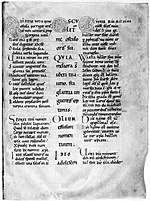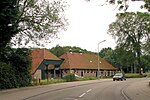Egmond aan den Hoef

Egmond aan den Hoef (Dutch pronunciation: [ˈɛxmɔnt aːn dən ˈɦuf]) is a village in the Dutch province of North Holland. It is a part of the municipality of Bergen, and lies about 7 kilometres (4.3 mi) west of Alkmaar. Until 2001, Egmond aan den Hoef was part of the municipality of Egmond. The village was first mentioned in 1167 Ekmunde, and means "parcel of land belonging to Egmond". The name originally applied only to the castle, but was later used for the settlement around the castle.In Egmond aan den Hoef are the remains of Egmond Castle, the residence of the House of Egmond. The castle was first built in the 11th century, and was destroyed around 1205. It was rebuilt and fortified, and was destroyed again in the 14th century. Again it was rebuilt. In 1573 at the order of William the Silent it was demolished by the Geuzen, led by Diederik Sonoy. The remnants were taken down at the end of the 18th century. During the 1930s the remains were dug up. The French philosopher René Descartes, author of Meditations on First Philosophy, lived in Egmond aan den Hoef, right near the castle remains, in 1643-44 and perhaps longer. For many years he lived in the neighboring village of Egmond-Binnen.
Excerpt from the Wikipedia article Egmond aan den Hoef (License: CC BY-SA 3.0, Authors, Images).Egmond aan den Hoef
Bisschopskroft, Bergen
Geographical coordinates (GPS) Address Nearby Places Show on map
Geographical coordinates (GPS)
| Latitude | Longitude |
|---|---|
| N 52.616666666667 ° | E 4.65 ° |
Address
Bisschopskroft 37
1934 DG Bergen
North Holland, Netherlands
Open on Google Maps









